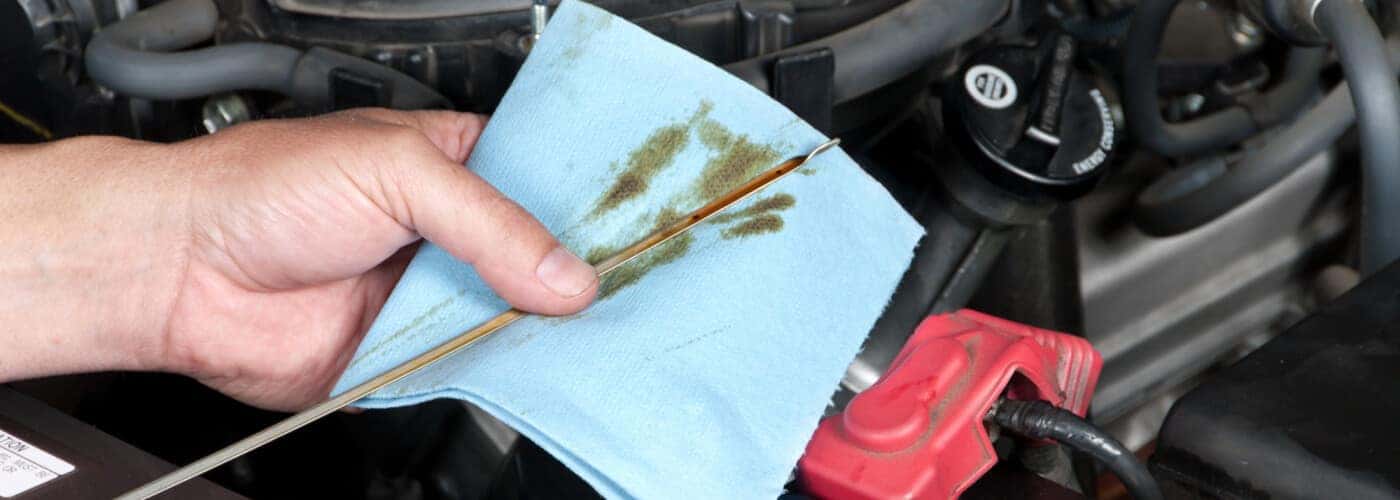Have you ever wondered if you can check your car’s oil right after driving? You might think it’s quick and easy to pop the hood and take a look, but is it safe?
Checking your car oil when it’s hot can affect how accurate the reading is—and even put you at risk of burns. Knowing the right way to check your oil helps you keep your engine healthy and avoid costly repairs. You’ll discover the best time and method to check your car oil safely and accurately.
Keep reading to make sure you’re taking care of your car the right way.
Checking Oil Temperature
Checking your car’s oil temperature is important for accurate readings. Oil expands as it heats up, changing its level in the engine. Knowing when and how to check oil helps keep your engine safe and healthy.
Cold oil sits lower in the dipstick tube. Hot oil moves higher because it becomes thinner. Understanding oil temperature helps you know the best time to check and add oil if needed.
Why Oil Temperature Matters
Oil temperature affects how oil flows in the engine. Cold oil is thick and may not show the true level. Hot oil is thinner and expands, showing a higher level than normal.
Checking oil at the right temperature gives the most accurate reading. This helps avoid overfilling or underfilling your engine oil. Proper oil level keeps the engine parts lubricated and running smoothly.
Risks Of Checking When Hot
Checking oil when the engine is hot can cause burns. The engine parts and oil are very hot and can hurt your skin. Hot oil can splash and cause serious injuries.
Also, hot oil gives a false reading on the dipstick. You might think the oil level is correct when it is not. This can lead to engine problems over time.
It is safer to wait for the engine to cool down. This helps you get a correct oil level and avoid injuries.
When To Check Car Oil
Knowing the best time to check your car oil helps keep your engine healthy. Checking oil at the right time gives the most accurate reading. It also prevents mistakes that can cause engine damage. Different conditions call for different checking methods. Understanding these helps you maintain your car better.
Cold Engine Checks
Check your oil when the engine is cold for a clear reading. This means before you start your car or after it has been off for several hours. Cold oil settles at the bottom of the engine, making it easier to see the true level. Use a clean cloth to wipe the dipstick, then insert and remove it again to check the level. This method shows the exact amount of oil in the engine.
Warm Engine Checks
Checking oil after the engine is warm can also work but needs care. Run the engine for a few minutes, then turn it off and wait five to ten minutes. This allows the oil to flow back into the oil pan. At this point, pull out the dipstick and wipe it clean before checking the level. Warm engine checks give a good idea of oil condition but are slightly less accurate than cold checks.
Step-by-step Oil Check
Checking your car’s oil is key to keeping the engine healthy. A step-by-step oil check helps you avoid mistakes. It ensures you get the right oil level every time. Follow these simple steps for an accurate reading.
Preparing The Vehicle
Park your car on a flat surface. Turn off the engine and wait five to ten minutes. This lets the oil settle in the pan. Open the hood and find the dipstick. Clean the dipstick with a cloth before you check the oil.
Using The Dipstick Correctly
Pull the dipstick out slowly. Wipe it clean with a soft cloth. Insert it fully back into the tube. Pull it out again carefully to read the oil level. Avoid touching the sides of the tube with the dipstick.
Interpreting Oil Levels
Look at the oil mark on the dipstick. It should be between the “low” and “full” marks. If below “low,” add oil in small amounts. Dark or gritty oil means it needs changing. Clear, amber oil is healthy. Check for any unusual colors or smells too.

Credit: oilchangers.com
Safety Tips For Oil Checks
Checking your car’s oil is important for engine health. Doing this safely protects you from injuries. Hot oil and engine parts can cause burns. Use safe steps for every oil check. Keep safety as your top priority.
Avoiding Burns
Never touch the engine or oil dipstick right after driving. These parts get very hot. Wait at least 15 minutes for the engine to cool. Use a cloth or glove to hold the dipstick. Avoid reaching near the exhaust or radiator. Hot surfaces can cause serious burns fast.
Proper Tools And Gear
Use clean rags to wipe the dipstick. Wear gloves to protect your hands from heat and oil. Use a flashlight for a clear view in dark engine areas. Have a flat surface to park your car. Proper tools make oil checks easier and safer.
Effects Of Hot Oil On Engine
Engine oil plays a key role in keeping your car’s engine running smoothly. The oil lubricates, cools, and cleans engine parts. When oil gets hot, it changes in ways that affect engine performance and health. Understanding these changes helps protect your engine from damage.
Hot oil behaves differently than cold oil. It becomes thinner and less effective. This change can cause problems for the engine if not managed properly.
Oil Viscosity Changes
Viscosity means how thick or thin the oil is. Hot oil becomes thinner and flows faster. Thin oil may not protect engine parts as well. It can slip through gaps and cause metal parts to rub together. Proper oil thickness is important for good lubrication.
Potential Engine Damage
Hot oil that is too thin leads to more wear and tear. Engine parts can overheat and wear out faster. Oil breaks down faster at high temperatures. This reduces its ability to protect the engine. Regular oil checks and changes help prevent damage.
Credit: driven2drive.com
Common Myths About Oil Checks
Many people have wrong ideas about checking car oil. These myths cause confusion and mistakes. Knowing the truth helps keep your car healthy and safe. It also saves money on repairs.
Let’s clear up some common myths about oil checks. Understanding the facts will make checking oil easier and more effective.
Hot Vs. Cold Checking Accuracy
Some say you must check oil only when the engine is cold. Others say hot is better. The truth lies in accuracy. Checking oil when the engine is warm gives a better reading. Warm oil spreads evenly in the engine. It shows the true oil level.
Cold oil can sit in parts of the engine. This makes the level look lower than it is. Still, wait a few minutes after turning off the engine. Hot oil is safer to check right after cooling a bit. This avoids burns and gives a good reading.
Frequency Of Oil Checks
Many think checking oil once a month is enough. Some check only before long trips. Oil level can drop quickly. Leaks or engine use affect it daily. Regular checks keep oil at the right level. This protects the engine from damage.
Check oil every two weeks if you drive a lot. For less use, once a month works. Always check before any long journey. This simple habit prevents car troubles and saves money.

Credit: www.donhattan.com
Frequently Asked Questions
Can You Check Car Oil Immediately After Driving?
It is not recommended to check car oil right after driving. The engine is hot, and oil is dispersed. Wait 10-15 minutes for oil to settle for an accurate reading.
Why Should Car Oil Be Checked When Cold?
Checking oil when cold prevents inaccurate readings caused by hot, circulating oil. Cold oil settles at the bottom, showing the correct level on the dipstick.
What Risks Exist Checking Oil When The Engine Is Hot?
Checking oil when hot can cause burns from hot engine parts or oil. Also, oil expands when hot, giving a false high level reading.
How Often Should Car Oil Level Be Checked?
Check car oil at least once a month or before long trips. Regular checks help maintain engine health and avoid costly repairs.
Conclusion
Checking car oil when the engine is hot can be risky. Hot oil can cause burns or give false readings. It’s safer to wait at least 10-15 minutes after turning off the car. This lets the oil settle and cool down a bit.
Always use a clean cloth to wipe the dipstick before checking. Regular oil checks keep your engine healthy and running smoothly. Take your time and be careful. Your car will thank you for the proper care.
Recent Posts
Unlock the secrets to perfect engine health with our easy-to-understand guide on car oil temperature! You'll be cruising confidently knowing exactly what that gauge means for your ride.
Spotting a mysterious puddle under your ride? Don't stress—we've uncovered the simplest, quickest fixes for those annoying car oil leaks right now!


